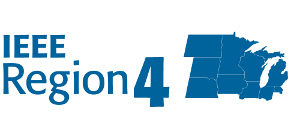4th IEEE Workshop on Interconnections of Renewables & Energy Storage to Electric Grids
Room: DT-LL-1 & DT-LL-2, Bldg: AES Ohio Office, 1065 Woodman Drive, Dayton, Ohio, United States, 45432, Virtual: https://events.vtools.ieee.org/m/406059This one-day workshop focuses on planning, operations, modeling, analysis, and implementation of transmission & distribution connected renewables & energy storage, and their impacts on the system. There will be 4 utility executives and 2 members from the National Academy of Engineering (NAE) to participate along with over a dozen of renowned speakers and panelists from utilities, vendors, consultants, universities, and national labs. Seven PDHs will be provided to attendees who attend the entire workshop in person or online. This is a great and uncommon opportunity for you to learn & discuss those cutting-edge technologies with experts from various perspectives. Please RSVP before April 21st with the correct email address. The registration fee (for both in-person and remote attendees) is only $20 for non-IEEE members and $15 for IEEE members, which will cover all food, refreshments, beverages, and PDH certificates if needed. Look forward to seeing you at Dayton! Logistic Notes: Free parking will be available in the AES Ohio facility following guidance. Lunch, morning refreshments, and coffee will be provided to in-person attendees and covered by the registration fees. Students and invited panelists/speakers can send an email to [email protected] for registration by waiving the registration fees. Agenda: [] Room: DT-LL-1 & DT-LL-2, Bldg: AES Ohio Office, 1065 Woodman Drive, Dayton, Ohio, United States, 45432, Virtual: https://events.vtools.ieee.org/m/406059

